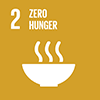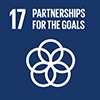Description/achievement of initiative
Amino acids are the building blocks of protein consisting basic elements of all lives including human beings on Earth. CJ CheilJedang, reputed to be the responsible global food and bioengineering company, has focused on contributing to environmental sustainability and improving food security through technological innovation of amino acids used in livestock industry. Its recent projects such as “Effective Utilization of Cultivated Land”, “Prevention of Environmental Pollution caused by Livestock Industry” and “Collaborative Development of Biotechnology in Asia” explicitly contribute to the achievement of SDGs and elicit innovative transformations in environment, food security, and bio industries in developing countries as well.
Implementation methodologies
Importance of amino acids for animals has grown because difficulties of securing grain for feeds due to recent climate change and growing contagious diseases in livestock industry observed throughout the years. CJ CheilJedang is currently supplying amino acids all over the world and keeps expanding its market especially in Asian countries. Particularly, it is putting tremendous effort on marketing amino acids in China and other Asian countries as this is where the low awareness on importance of low-protein feeds is observed. Aiming to lead on spreading the advanced livestock culture of Europe to Asia, industry players including CJ has successfully contributed to approximately 8~9% decline of nitrogen excretion within the region. Moreover, it is planning to expand its market by promoting optimized formulation of different kinds of amino acids that can eventually decrease 20~30% of nitrogen excretion and prevent the environmental pollution caused by livestock industry.
Arrangements for Capacity-Building and Technology Transfer
CJ CheilJedang continues to expand its realm of great influence from developed countries to developing ones in Asia. This global business structure is optimal as it is its vision to proliferate usage of environment-friendly amino acids within various regions. Particularly laying the concrete foundation to collaborate with both public and private sectors within Asia, CJ continues to excavate opportunities to contribute to multinational economic collaboration. Having Korea’s biggest BIO R&D Center as technological hub in Korea, it carries on making its own history of unprecedented bio-research and it will take the role of concrete footing to have technologies transferred in China, Indonesia, Malaysia, and other major countries. Moreover, CJ CheilJedang will continue to acquire mind-blowing achievements for the protection of environment and food security along with innovation in livestock industry through intensive and diverse researches on all amino acids.
Coordination mechanisms/governance structure
Starting to produce MSG back in 1964, CJ CheilJedang has made its own history of unprecedented bio-research. Based on the microbial fermentation technology that has been evolved and accumulated over the five decades, CJ is now the only global manufacturer that has competencies of commercially producing five major amino acids, ‘L-Lysine,’ ‘L-Threonine,’ ‘L-Tryptophan,’ ‘L-Methionine’ and ‘L-Valine’ for animal nutrition. It also accomplished noticeable scientific achievement by commercially producing ‘L-Methionine’ through microbial fermentation. This production method is eco-friendly bio innovation that also minimizes industrial wastes by reprocessing most byproducts as fertilizer. One of CJ’s core products, ‘L-Lysine’, is now produced in four different continents: Pasuruan Plant in Indonesia, Liaocheng/Shenyang plants in China, Piracicaba plant in Brazil and Fort Dodge plant in the United States. Now it has 30 percent of the global market share with dominant production capacity. It is also noteworthy that ‘L-Lysine’ is taking pivotal role in the aspect of global food security. According to the field studies, one metric ton of ‘L-Lysine HCI’ is proven to save 33 tons of soybean meal. This implicates that the estimated annual usage of ‘L-Lysine’ in the world (2.2 million metric tons in 2015), saves up to 73 million metric tons of soybean meal. This amount is equivalent to 90% of the soybean produced in the Unites States in 2015. Consequently, we may contribute to solving the world’s hunger problem by growing edible grains on the land which was previously utilized for soybean cultivation.Amino acids for animal nutrition also contribute to the prevention of environmental pollution. It is a known and proven fact that soil contaminated at the livestock farms significantly threatens human health. Feeding animals with amino acids means reducing the excessive amount of protein in conventional feeds ultimately decreasing the amount of the livestock’s contaminated nitrogen release. Industry as a whole is planning to supply high-quality amino acids throughout China and Asia, which is expected to create more positive impacts on the environment of Asia in the long run. In 2015, the global annual demand for respective amino acids for animals was estimated to be as follows: 2~2.3 million metric tons for ‘L-Lysine’, 1~1.1 million metric ton for ‘L-Methionine, 40~50 thousand metric tons for ‘L-Threonine’, 20~30 thousand metric tons for ‘L-Tryptophan’. The industry is also in the process of preparing for commercial launch of additional limiting amino acids such as ‘L-Valine’, ‘L-Isoleucine’, ‘L-Leucine’, and ‘L-Arginine’ that hold future potentials.
Partner(s)
CJ CheilJedang, Korean Association for Supporting the SDGs fot the UN (ASD), Ministry of Agriculture, Food and Rural Affairs of ROK



 December/2020
December/2020
 January/2012
January/2012
 June/2013
June/2013
 June/2014
June/2014
 Time-frame: 2012 - 2025
Time-frame: 2012 - 2025